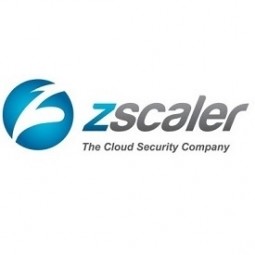技术
- 网络安全和隐私 - 应用安全
- 网络安全和隐私 - 云安全
适用行业
- 国家安全与国防
- 零售
适用功能
- 物流运输
用例
- 篡改检测
- 交通监控
服务
- 云规划/设计/实施服务
关于客户
Northgate Market 是一家位于加利福尼亚州阿纳海姆的零售公司,在南加州拥有并经营 40 家超市,每周接待 50 万名顾客。该公司成立于 1980 年,专注于提供新鲜和熟食以及国产和进口拉丁美洲杂货。Northgate Market 致力于提供有意义的工作,提供一个将个人视为家庭成员的工作场所。该公司还管理着两个数据中心和一个 384,000 平方英尺的配送中心。
挑战
Northgate Market 通过市场增长和战略收购将规模扩大到 40 家超市。其雄心勃勃的扩张目标包括增加服务和能力,旨在为客户提供卓越的服务。然而,这些雄心壮志受到其老化基础设施、有限且存在故障的网络和安全能力的阻碍。Northgate Market 在 MPLS 网络上运营,每个地点有两个 T-1 网络连接,容量有限,为 3Mbps。当主要地面网络发生故障时,无线 3G LTE 网络充当备份。不幸的是,网络速度很慢,经常中断。所有互联网流量都从各个超市回程到两个公司数据中心,并通过 Web 内容过滤设备进行保护,然后再进入互联网。这造成了瓶颈,对用户体验以及 Northgate Market 员工向客户提供优质服务的能力产生了负面影响。
解决方案
Northgate Market 部署了 VMware SD-WAN 来应对其商店位置的这些挑战。它还采用 Zscaler Internet Access 来保护来自这些位置的流量。 Zscaler 和 VMware SD-WAN 共同优化和保护本地互联网突破。它们共同实现了从超市位置快速、安全地访问网站和关键业务云应用程序,而无需传统网络和安全设备的成本和复杂性。 Zscaler 和 VMware SD-WAN 的合作使 Northgate Market 可以轻松地从其传统的中心辐射型架构迁移到安全的 SD-WAN 基础架构,并将流量从多个位置安全地路由到互联网。 Zscaler 云安全平台简化了整个安全堆栈的交付,帮助 Northgate Market 降低总体费用并节省了 40%。该解决方案还使 Northgate Market 能够提高其带宽能力,以支持不断扩大的流量需求,同时改善其安全状况。
运营影响
数量效益

Case Study missing?
Start adding your own!
Register with your work email and create a new case study profile for your business.
相关案例.

Case Study
Improving Production Line Efficiency with Ethernet Micro RTU Controller
Moxa was asked to provide a connectivity solution for one of the world's leading cosmetics companies. This multinational corporation, with retail presence in 130 countries, 23 global braches, and over 66,000 employees, sought to improve the efficiency of their production process by migrating from manual monitoring to an automatic productivity monitoring system. The production line was being monitored by ABB Real-TPI, a factory information system that offers data collection and analysis to improve plant efficiency. Due to software limitations, the customer needed an OPC server and a corresponding I/O solution to collect data from additional sensor devices for the Real-TPI system. The goal is to enable the factory information system to more thoroughly collect data from every corner of the production line. This will improve its ability to measure Overall Equipment Effectiveness (OEE) and translate into increased production efficiencies. System Requirements • Instant status updates while still consuming minimal bandwidth to relieve strain on limited factory networks • Interoperable with ABB Real-TPI • Small form factor appropriate for deployment where space is scarce • Remote software management and configuration to simplify operations

Case Study
Digital Retail Security Solutions
Sennco wanted to help its retail customers increase sales and profits by developing an innovative alarm system as opposed to conventional connected alarms that are permanently tethered to display products. These traditional security systems were cumbersome and intrusive to the customer shopping experience. Additionally, they provided no useful data or analytics.

Case Study
How Sirqul’s IoT Platform is Crafting Carrefour’s New In-Store Experiences
Carrefour Taiwan’s goal is to be completely digital by end of 2018. Out-dated manual methods for analysis and assumptions limited Carrefour’s ability to change the customer experience and were void of real-time decision-making capabilities. Rather than relying solely on sales data, assumptions, and disparate systems, Carrefour Taiwan’s CEO led an initiative to find a connected IoT solution that could give the team the ability to make real-time changes and more informed decisions. Prior to implementing, Carrefour struggled to address their conversion rates and did not have the proper insights into the customer decision-making process nor how to make an immediate impact without losing customer confidence.

Case Study
Ensures Cold Milk in Your Supermarket
As of 2014, AK-Centralen has over 1,500 Danish supermarkets equipped, and utilizes 16 operators, and is open 24 hours a day, 365 days a year. AK-Centralen needed the ability to monitor the cooling alarms from around the country, 24 hours a day, 365 days a year. Each and every time the door to a milk cooler or a freezer does not close properly, an alarm goes off on a computer screen in a control building in southwestern Odense. This type of alarm will go off approximately 140,000 times per year, equating to roughly 400 alarms in a 24-hour period. Should an alarm go off, then there is only a limited amount of time to act before dairy products or frozen pizza must be disposed of, and this type of waste can quickly start to cost a supermarket a great deal of money.

Case Study
Supermarket Energy Savings
The client had previously deployed a one-meter-per-store monitoring program. Given the manner in which energy consumption changes with external temperature, hour of the day, day of week and month of year, a single meter solution lacked the ability to detect the difference between a true problem and a changing store environment. Most importantly, a single meter solution could never identify root cause of energy consumption changes. This approach never reduced the number of truck-rolls or man-hours required to find and resolve issues.








